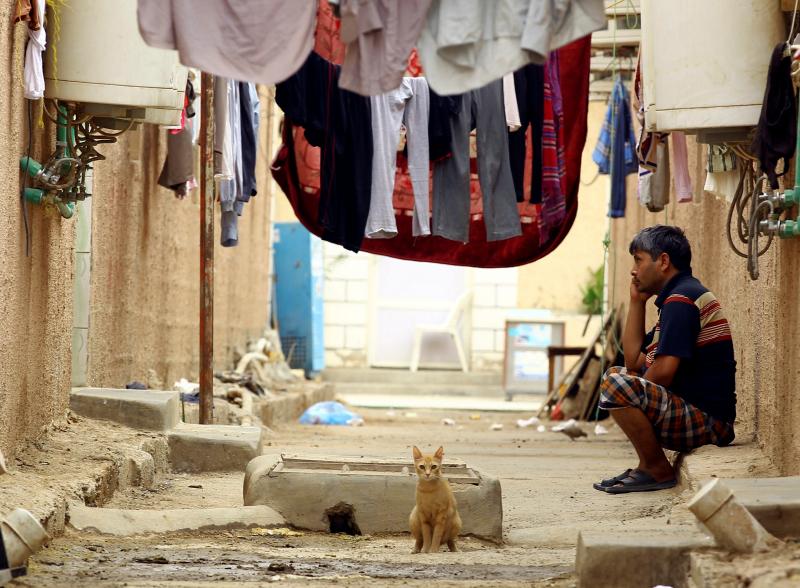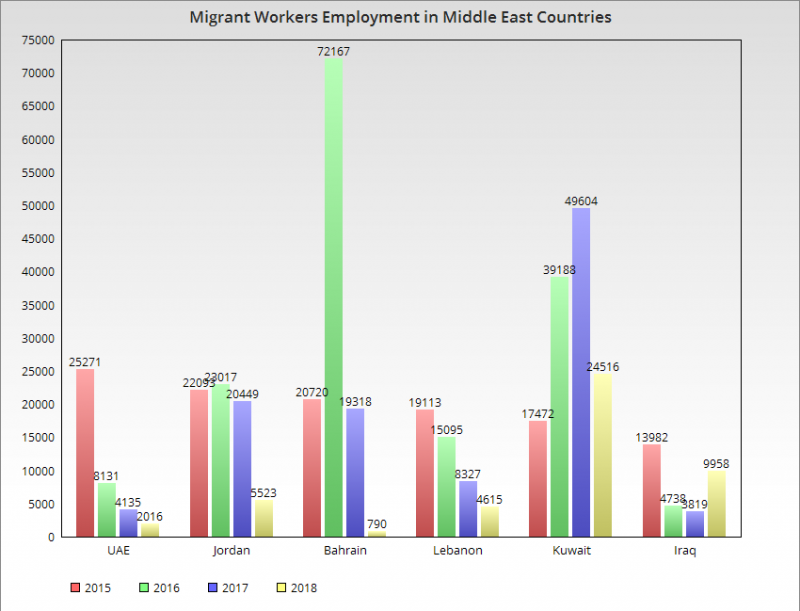
Manpower export to the Middle Eastern states has significantly dropped over the past couple of years.
A large number of people, who flew abroad with a hope to spin the wheel of their fortune for the better, are returning almost every other day.
On Sept 3, as many as 300 workers returned home with another 700 waiting to fly back and the tally goes up every day.
Most of them came back from Saudi Arabia, Qatar, Oman, Kuwait, Jordan and Lebanon.
According to figures by the Bureau of Manpower, Employment and Training (BMET), the number of workers going to Middle East dropped by 26 percent between 2015 and August this year. Like other countries, Bangladesh’s labour market was hit hard in Saudi Arabia after the Kingdom announced its plan to include 12 different sectors under ‘Saudification’.
Like other countries, Bangladesh’s labour market was hit hard in Saudi Arabia after the Kingdom announced its plan to include 12 different sectors under ‘Saudification’.
Over 700,000 migrant workers lost job in the Kingdom since August 2017.
Oil price drop, closure of construction sites, employment initiative for native people coupled with political instability, economic crisis, and social problems contributed to downsize the labour markets in the region, which an analyst said ‘alarming’ for Bangladesh.
“Bangladesh has been witnessing no upward trends in the Middle East’s labour markets for quite some time.
“Dwindling oil prices, which leads to closure big companies’ construction sites, is one of the main reasons for the labour market to shrink coupled with existing hostile situations in the region,” says Shariful Hasan, who head the BRAC migration programme. In 2017, a large number of people went to Saudi Arabia on ‘free visa’, which they found a fraud and many of them had to return.
In 2017, a large number of people went to Saudi Arabia on ‘free visa’, which they found a fraud and many of them had to return.
Bangladesh exports manpower to 158 countries, which Hasain says is dominated by only seven to eight countries.
“Bangladesh still lacks in finding out alternative labour markets as well as creating skilled manpower,” he said.
Oversees Workers Development Programme Chairman Shakirul Islam echoed.
“Focus should be given on the skill of manpower instead of its number. There is huge a demand of skilled labour in many countries and the government should step in,” said Islam.
The government, however, said it has been searching for new markets.
Expatriates' Welfare and Overseas Employment Minister Nurul Islam said “The government has already started exploring new markets.”
“Process to send workers to several countries including Russia and Japan underway,” he said
Data from BMET shows, Bangladesh has sent 11,965,637 people to 158 countries across the world between 1976 and Aug 2018 and earned $186937.96 million in remittance from migrant workers.
The shrinking labour market in Middle East has also left a toll on the inward remittance.
In September, expatriate Bangladeshis have sent nearly $1.13 billion, down by 20 percent from the previous month.
Remittance inflow in August stood at a little over $1.41 billion.
Bangladesh receives the bulk of its remittances from six Middle-East countries – Saudi Arabia, the United Arab Emirates, Qatar, Oman, Kuwait and Bahrain.
Remittances sent by expatriates account for 12 percent of Bangladesh’s gross domestic product (GDP).


